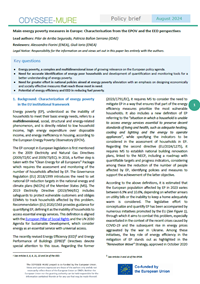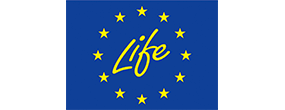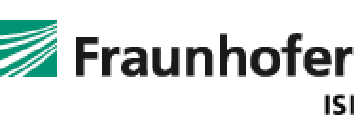Summary
Key questions
- Energy poverty, a complex and multidimensional issue of growing relevance on the European policy agenda.
- Need for accurate identification of energy poor households and development of quantification and monitoring tools for a better understanding of energy poverty.
- Need for greater effort in national policies aimed at energy poverty alleviation with an emphasis on designing economically and socially effective measures that reach those most in need.
- Potential of energy efficiency and EED in reducing fuel poverty.
Lead authors: Pilar de Arriba Segurado, Patricia Bañon Serrano (IDAE)
Reviewers: Alessandro Fiorini (ENEA), Giuli Iorio (ENEA)
Background: Characterization of energy poverty in the EU institutional framework
Energy poverty (EP), understood as the inability of households to meet their basic energy needs, refers to a multidimensional, social, structural and energy-related phenomenon, and is directly related to low household income, high energy expenditure over disposable income, and energy inefficiency in housing, according to the European Energy Poverty Observatory (EPOV).
The EP concept in European legislation is first mentioned in the 2009 Electricity and Natural Gas Directives (2009/72/EC and 2009/73/EC). In 2016, a further step is taken with the "Clean Energy for all Europeans" Package which requires the assessment and monitoring of the number of households affected by EP. The Governance Regulation (EU) 2018/1999 introduces the need to set national EP reduction targets in the national energy and climate plans (NECPs) of the Member States (MS). The 2019 Electricity Directive (2019/944/EC) includes safeguards to protect vulnerable customers and obliges MS to track households affected by this problem. Recommendation (EU) 2020/1563 provides guidance for quantifying EP, defining it as the inability of households to access essential energy services. This definition is aligned with the European Pillar of Social Rights and the UN 2030 Agenda for Sustainable Development, which consider energy as an essential service with universal access.
The recently revised Energy Efficiency (EED)1 and Energy Performance of Buildings (EPBD)2 Directives devote special attention to this issue. Regarding the former (2023/1791/EC), it requires MS to consider the need to mitigate EP in a way that ensures that part of the energy efficiency measures prioritize the most vulnerable households. It also includes a new definition of EP referring to the "situation in which a household is unable to access energy services essential to preserve decent standards of living and health, such as adequate heating, cooling and lighting and the energy to operate appliances", while specifying the indicators to be considered in the assessment of households in EP. Regarding the second directive (EU/2024/1275), it requires MS to establish national building renovation plans, linked to the NECP, including a roadmap with quantifiable targets and progress indicators, considering among these the reduction of the number of people affected by EP, identifying policies and measures to support the achievement of the latter objective.
According to the above definitions, it is estimated that the European population affected by EP in 2023 varies between 6.9% and 10.6%, depending on whether arrears on utility bills or the inability to keep a home adequately warm is considered. The legislative effort to conceptualize and quantify EP has been accompanied by numerous initiatives promoted by the EU (See Figure 1), through which it aims to combat this problem, especially exacerbated in the context of the recent crises caused by COVID-19 and the subsequent rise in energy prices aggravated by the war in Ukraine. Among these initiatives, the key role of energy efficiency in the mitigation of EP stands out as highlighted in the "Renovation Wave" Strategy, approved in October 2020 as part of the European Green Deal and aimed at boosting the structural renovation of buildings; among its priorities is the fight against EP through the rehabilitation of the most inefficient buildings and access to healthy housing. Support for structural measures and investments in energy efficiency and the renovation of buildings, clean heating and cooling, among others, are considered within the Social Climate Fund (SCF) (Regulation (EU) 2023/955). In line with this, Recommendation (EU) 2023/2407 highlights investment in structural energy efficiency measures with the highest impact to combat EP (building renovation, efficient equipment).
Figure 1: Timeline of relevant EU energy poverty related initiatives
| 2009 | Third energy package: Introduction of the concept of energy poverty Directives 2009/72/EC; 2009/73/EC |
| 2016 | Clean energy for all Europeans' legislative package: Launch of the Energy Poverty Observatory (EPOV) |
| 2017 | European Pillar of Social Rights |
| 2018 | Regulation (EU) 2018/1999 on Governance: Requirement for MS to assess the no. of households in energy poverty and describe their policies to address energy poverty in their NECPs |
| 2019 | European Green Deal: Supplying clean, affordable and secure energy |
| 2020 | Renovation Wave for Europe (COM(2020) 662 final: fight against Energy poverty and improvement of less efficient buildings. Recommendation (EU) on energy poverty (C(2020) 9600 final)) |
| 2021 | Launch of the Energy Poverty Advisory Hub (EPAH) Tackling rising energy prices: a toolbox for action and support (COM(2021) 660 final) ‘Fit for 55’ package Proposal for a revision of the EPBD |
| 2022 | Energy Poverty and Vulnerable Consumers Coordination Group (Decision (EU) 2022/589) REPowerEUl: Support for vulnerable households |
| 2023 | EU Social Climate Fund (Regulation EU/2023/955) Recommendation (EU) and guidance on energy poverty (C/2023/4080) Revised EED |
| 2024 | Revised EPDB |
Current situation of European countries facing the challenge of energy poverty: From theory to practice
Definitions and indicators of energy poverty in Europe
The growing importance of this problem at the European level makes it necessary to adopt effective solutions, requiring definition and quantification by means of appropriate indicators. In this respect, the positioning of countries differs according to their national contexts, with a certain variability in terms of the availability of definitions, number, and type of indicators used, as well as measures considered good practices3. An analysis based on information from the latest versions of the NECPs submitted to the European Commission (EC) in 20234 and 20205 shows that 82.1% of the countries analysed (28) have a definition of the concept of vulnerable consumers, while 60.7% (dark bars in Figure 1) have a definition6 referring to EP or are in the process of adopting it. In most of these countries, per capita income (PCI) is lower than the European average (37,620 €), with most of the countries located in southern and eastern Europe. The absence of a specific definition in the advanced economy countries can be explained by differences in social and economic policies, which contribute to a greater capacity of households to assume energy expenses and maintain the thermal comfort of their homes, thus comparatively reducing the incidence of this problem (see section 3). Despite the above, 78.6% of the countries present measures aimed at EP, detailed in their PNIECs and strategies or in their national plans to combat EP. Only 7 countries have a specific strategy - Spain, Portugal, the United Kingdom (UK), and Greece - or action plan – Austria, Ireland and Slovenia. Regarding the quantification of EP, 78.6% use some type of metric or indicator. On the other hand, 5 countries have set up Energy Poverty Observatories (France, Ireland, UK, Portugal, and Italy). The magnitude and awareness of this problem is gaining ground, as illustrated in the map in Figure 2, which shows a policy relevance index7 based on the availability of some of the abovementioned metrics.
Figure 2: Relevance of the EP in Europe vs PCI
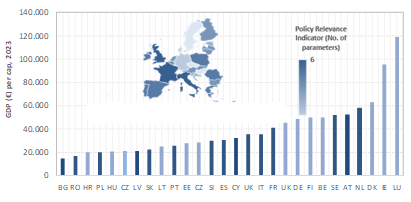
Source: NECPs;EUROSTAT/National statistical institute of the UK
Half of the countries have an index higher than 3. The recent crises (COVID-19 and rising energy prices) have undoubtedly contributed to its greater visibility.
Types and approaches to energy poverty indicators
The first indicators and methodological approaches to measure EP are from the UK, where there is pioneering work in this area, such as the introduction of the first definition in the early 1990s, whereby EP was identified as the situation in which a household's energy expenditure to keep an adequate temperature exceeded 10% of its income. This definition laid the basis for the establishment of different methodologies and indicators, most notably the Low Income High Costs" (LIHC), used since 2013 until its replacement in 2021 by the Low Income, Low Energy Efficiency” (LILEE) indicator. The interest in measuring EP has spread to other European countries, with new proposals emerging as alternatives to the income and expenditure-based approach. The study of this problem is promoted by the EC through the EPOV and, more recently, from the Energy Poverty Advisory Hub (EPAH), which gives continuity to the EPOV since 2021. The EPOV established 4 primary indicators (2M-High share of energy expenditure, M/2-Low energy expenditure, inability to keep home adequately warm and arrears on utility bills) that can be differentiated into two approaches; the first two are objective, based on income and energy expenditure criteria, and the last two are subjective, based on household declarations. The EPAH Centre has expanded the number of indicators8 and their disaggregation, highlighting summer discomfort. The EPOV indicators are referenced in the NECPs of most countries that quantify EP. Alternative indicators used by some countries include parameters related to housing energy efficiency, thermal sensation of cold, the energy effort ratio (EER) referring to energy expenditure over household income, the LIHC metric, the intersection of the two previous indicators, the share of households receiving energy subsidies, the number of supply cuts for non-payment, and the comparison between the living wage and net income after energy expenses. Given the multidimensional nature of EP, the combined use of several indicators is convenient, although the availability of statistics for updating is a limiting factor. Comparative studies have been found in which a synthetic index is used to get a more accurate understanding of the EP. However, these ad hoc indices are not available in official statistics, unlike consensual indicators, which serve as a good proxy for EP despite their subjective nature.
Main frame of reference: Existence of strategies and plans to combat energy poverty
As stated in the strategies for combating EP in the countries where they have been implemented, both the definition and the availability of indicators for detecting and monitoring the EP lay the foundations for effectively addressing the problem by making it possible to diagnose it and establish medium and long-term reduction targets and measures to achieve them. In the case of Spain, the National Strategy against Energy Poverty 2019-2024 (ENPE in Spanish), approved in April 2019, has represented a turning point in the policy of combating EP by introducing a definition for the first time and establishing a general framework and lines of action. Among countries that lack a strategy, EP is considered within their energy plans, although in some countries, especially in northern Europe, it is addressed to a greater extent within social policies. Twenty-two countries have included EP as a separate phenomenon in the latest available version of the NECPs, indicating existing or planned measures. This figure is reduced in the case of countries with definitions as already mentioned. However, the relevance of EP has increased in the recent update of the NECPs. Only 9 countries have quantitative EP reduction objectives, being significant that nearly half (4) correspond to national strategies.
Table 1: EP Objective in quantitative terms
| Country | EP Objective in quantitative terms |
| ES | 2025: ≥ 25% reduction of EP (base 2017) (*) |
| FR | 2030: 0.5% reduction of Energy effort rate (cc) compared to 2022 |
| PT | 2030: 10% of pop. unable to keep their home warm; 2040: 5%; 2050; <1% |
| GR | 2025: ≥ 50% reduction of EP (base 2016); 2030: 75% reduction of EP (base 2016) |
| IT | 2022-2030: 1% yearly reduction in EP (Tª) |
| UK | 2040/2035: ≤ 5% of households in EP (Scotland)/(Wales) |
| LV | 2030: 5% of pop. at risk of EP |
| LT | 2030: 10% of pop. unable to keep their home warm -17% of households that spend a significant share of their income in energy expenditure |
Source: NECPS (2023), National EP Strategies and/or Plans (Countries highlighted in blue). Note: (*) The Spanish Strategy is currently under review.
Typology of EP measures from the perspective of the EPOV indicators (expenditure, income, behaviour) and the EED
The differences between countries in terms of the incidence of EP and the place this problem occupies on their agendas determine the variability of measures and resources made available for this purpose, which explains why some countries have been more proactive. Considering the parameters implicit in the EPOV indicators, measures aimed at combating EP at the European level can be classified according to their impact on the income and energy costs of vulnerable households. A third category9 can be added referring to actions on energy performance. These 3 categories, in turn, fall within the scope of the EED. The first measures, in general, consist of financial interventions through income transfers in the form of tariffs or checks and have a limited temporal impact. These measures have been commonly used to alleviate EP, gaining relevance in crisis situations such as the recent ones (COVID-19, inflation and price escalation after the war in Ukraine). However, according to Recommendation 202310 these measures are not enough as they do not eradicate the underlying causes of EP. Therefore, they need to be accompanied by other structural measures with a focus on energy efficiency (energy refurbishment, energy awareness campaigns, etc.), with a more lasting impact and which address the root of the problem. In line with this, measures focused on energy expenditure, specifically on efficiency, are gaining weight within European EP policies. In this respect, the EED11 stresses that the implementation of energy efficiency improvement measures should be a priority to reduce EP.
The above classification can be completed according to the objective of the measures, distinguishing between a social orientation or an energy saving or energy efficiency objective. The first group12 includes measures that act on energy prices and legislative measures that ensure the protection of the most vulnerable consumers. Social entities play an important role in the management of these measures. In the second case, financial support measures for efficiency improvements are preferably included, as well as advisory and information actions that together have an impact on energy expenditure.
Table 2: Classification of common measures to combat EP by approach in Europe
| OBJECTIVE \ EPOV | INCOME (Art. 21 EED) | EXPENSE (Art. 5, 8 and 9 EED) | BEHAVIOUR (Art. 22 and 24 EED) |
| SOCIAL | Social tariffs (discounts, vouchers, checks; VAT reduction) Payment of invoices. Prohibition of disconnection of energy supply |
Information on energy prices, tariffs | |
| ENERGY EFFICIENCY | Energy refurbishment (envelope, thermal comfort systems) Efficient household appliances Energy saving certificates |
Audits/Advice on energy consumption habits. Consumption meters |
Considering the categorization of measures based on the EPOV approach, a sample of 8 countries representative of the different European regions has been selected with different rationales in their approach to EP at a theoretical and practical level. However, they all share the same pattern with a prevalence of measures aimed at mitigating the energy price effect (income policies) and financial measures to support the improvement of energy efficiency in housing (expenditure policies). This combination helps to increase households' disposable income and minimize energy costs.
Spain has adopted numerous initiatives in recent years aimed at reducing EP, starting with the introduction of the electricity social bonus13 in 2009, a discount on the electricity bill of vulnerable consumers that acts through disposable income. A subsequent advance was the approval of Royal Decree 897/2017, of 6 October, which regulates the figure of the vulnerable consumer, the social bonus, and other protection measures. In 2018, the social bonus for thermal uses was introduced as a complementary mechanism that materialized in a single payment. From the expenditure perspective, programs promoted by the Ministries for Ecological Transition and Demographic Challenge (MITERD) (PREE and PREE 5000), and the Housing and Urban Agenda (MIVAU) (programs for the rehabilitation and promotion of social and efficient housing, regulated by RD 853/2021), which have vulnerable households among their targets, stand out. These programs seek to promote building efficiency and sustainability through actions on the thermal envelope, renewable thermal installations, and lighting. It is worth highlighting the social scope of MITERD's programs by paying special attention to the granting of aid for actions in buildings housing vulnerable households, which is channelled through the availability of the social voucher in coherence with the ENPE Strategy. The PREE 5000 program is aimed at demographically challenged municipalities14, which is interesting given the incidence of EP in rural areas. The level of aid in all these programs is higher in the case of vulnerable households, reaching 100% of the eligible costs in some of the MIVAU programs. In addition, there are informative actions that have an impact on energy behaviour and empowerment.
Germany lacks an official definition of EP, although it addresses this problem within a comprehensive social policy that seeks to protect vulnerable citizens and ensure access to essential basic services. From an income perspective, the Social Code includes several subsidies to cover the energy costs of the most vulnerable households. With respect to expenditure, it has various public aid programs aimed at improving the energy efficiency of buildings, which include vulnerable households among its beneficiaries, highlighting the BEG Program (Bundesförderung für effiziente Gebäude) implemented in 2021, through which vulnerable households' access to aid for energy rehabilitation and renovation of thermal systems is facilitated. At the behavioural level, Caritas promotes the "Energy Advice for low-income households (Stromsparcheck)" initiative, through which former long-term unemployed people are trained to provide free energy advice to low-income households, both online and in person through more than 150 offices. This measure also provides households with energy-saving items (e.g. LED light bulbs) and subsidies for the purchase of efficient refrigerators. This is complemented by energy advice and audits offered by consumer organizations at no cost to the most vulnerable households.
Table 3: EP Measures according to the EPOV approach in selected European countries
| Country | INCOME (*) | EXPENSE | BEHAVIOUR/INFORMATION (**) |
| ES |
Social bonuses (Electricity, Thermal, Energy Justice Electricity) Minimum Vital Supply (SMV) |
Energy rehabilitation programs: PREE (RD 737/2020); PREE 5000 (RD 737/2020) Programs for the rehabilitation and promotion of social and efficient housing (RD 853/2021) Incentive program 6 to support RES thermal installations in the residential sector (RD 477/2021) Naturgy Energy Rehabilitation Solidarity Fund |
Network of Energy Consumer Information Points (PICE)/ACA ENERSOC tool for social energy management/ECODES Workshops organized by Third sector entities (EAPN, Naturgy…) CNMC Energy Tariffs Comparator |
| FR |
Energy allowances (chèque énergie) The winter respite scheme Solidarity Housing Fund (FSL) |
MaPrimeRénov (MPR) Programme Energy Economic Certificates (EEC) |
Energy audits Social funds for energy management (FSATME) |
| DE |
Social Code: Basic Insurance for Jobseekers (electricity/heating expenses) Social tariffs from energy traders |
Federal subsidy for efficient buildings (Bundesförderung für effiziente Gebäude (BEG)) Energy Advice for low-income households (Stromsparcheck) |
Stromsparcheck Energy Consultancy and Energy Checks of the Federation of German Consumer Organisations (VZBV) |
| GR |
Social tariffs (electricity) Energy card to energy poor households Regulatory package to protect energy poor households |
The "Save 2021" programme Energy Upgrading of social housing - The "Green Neighborhoods" Programme Energy Efficiency Obligation Scheme (EEO Scheme) |
Information and education of affected households in the context of EEO Scheme Price Comparison Tool |
| IE |
Fuel Allowance Household Benefits Package (Electricity, Gas) Energy Engage Code / (Electricity Association of Ireland (EAI)) |
Warmer Home Scheme (Low Income Housing Strategy) BEC Scheme (energy efficiency home upgrades for lower income households) Energy Efficiency Obligation Scheme (EEOS) |
|
| PT |
Social Electric Energy Tariff Program to support the acquisition of bottled LPG Reduction of the fee to access networks Access to regulated market |
Efficiency Voucher Programme Programme to support sustainable buildings Programme to support residential condominiums |
CINERGIA (Energy information for the general public) Save Energy Poupa Energia Energy Roadshow Rota da Energia |
| RO | Household Heating Aid and Energy Supplement Social tariff |
Program on carrying out works aimed at increasing energy efficiency in single-family homes (Casa Eficienta Energetic) Programs for thermal insulation of buildings in communities affected by energy poverty within the National Strategy on Social Inclusion and Poverty Reduction 2022-2027 |
Development and use of fully-fledged national social assistance information system |
| UK |
Warm Home Discount Energy Price Cap Cold Weather Payments Winter Fuel Payment |
Energy Company Obligation (ECO) (England, Wales, Scotland) Energy Efficiency (Private Rented Property) (England, Wales) Regulations 2015/Private and Social Sector Regulations (Scotland) Home Energy Efficient Programmes (HEEP) (Scotland) Decent Homes Standard (DSH) – social housing |
Big Energy Saving Network Best Energy Deal |
Notes: (*) Most countries include measures to protect vulnerable consumers from disconnection.
Source: MURE, ENPOR, Naturgy, IDAE, NECPs, EPOV. Member State Reports on Energy Poverty 2019; (**) France, Ireland, UK, Portugal have EP Observatories.
France has reduced energy tariffs for vulnerable households, as well as aid for the payment of energy bills, such as the energy check and the Housing Solidarity Funds. In terms of measures affecting energy expenditure, the MaPrimeRénov' Program (MPR) and the Energy Saving Certificates (CEE), decisive instruments for the energy-efficient renovation of housing, stand out. The MPR Program, launched in 2020, and managed by the National Housing Agency, provides aid for the improvement of insulation as well as for the installation of new equipment (heating, boilers, or heat pumps), with an emphasis on thermal systems based on renewable energies. Since its launching, it has been subject to several modifications with differences in scope and objectives. The level of support is increased in the case of vulnerable households, reaching 100% coverage in the MRR "accompanied" program. A minimum housing age requirement of 15 years has been introduced in 2024, to promote the renovation of the oldest segment of the housing stock. The EEC certificate system, a key tool for achieving the final energy savings target (Art. 8 EED) in France, incentivizes energy marketers to get involved in promoting energy efficiency among energy consumers. According to the Law for Energy Transition and Green Growth, adopted in 2015, part of the EEC must generate savings in energy-poor households. To this end, obligated parties must implement savings actions targeting the housing or transportation of low-income households. The share of "precariousness" in the EEC is currently at 36% of the obligation (1,130 TWh) in 2022-2025. At the behavioural level, there is support for energy management and advice.
The UK has a long history in the fight against EP, as can be deduced from the existence of a first strategy in 2001, which has subsequently been adapted at the regional level. The management of EP is delegated to the regional level in aspects related to energy efficiency programs that act through expenditure, while policies that intervene through energy prices and income are managed at the national level. From the incoThe UKme perspective, measures such as social tariffs (Energy Price Cap), the heating discount (Warm Home Discount), or winter fuel payments (Winter Fuel Payment) are applied. In terms of energy efficiency, the Energy Company Obligations (ECO), in force since 2013, establish that energy suppliers must comply with obligations to reduce carbon emissions and heating costs, with an emphasis on low-income households, considering actions on home insulation and heating systems. Part of the measures are required to be carried out in rural areas. Other measures of interest are the establishment of mandatory minimum energy efficiency standards for social housing and private rental housing, as well as regional programs for housing energy efficiency assistance (HEEPS), including advisory services for vulnerable households.
Ireland has different measures to support vulnerable households through income support, such as the winter heating allowance (Fuel Allowance) and through expenditure related to energy refurbishment grants, managed by the Sustainable Energy Authority of Ireland (SEAI). Of the latter, the BEC (Better Energy Communities) program is designed to provide cleaner and cheaper energy by improving the energy efficiency of existing homes and buildings, helping to alleviate the effects of fuel poverty, and the Warmer Home Scheme is aimed specifically at households at risk of exclusion, prioritizing the most energy inefficient homes. Likewise, the Energy Efficiency Obligations Scheme (EEOS), in force since 2014, aims to contribute 60% to the savings target (Art. 8 EED) in 2030 through actions undertaken by obligated parties in different sectors. A total of 5% of the target must be achieved through actions on vulnerable households.
In Greece, the "Energy Upgrading of social housing - The "Green Neighbourhoods" and "Save 2021" programs stand out. The first, implemented in 2011, consists of a pilot project aimed at the energy rehabilitation of a selection of social building blocks occupied by low-income citizens to convert them into near-zero consumption buildings, and the optimization of the local microclimate. The second, approved in 2021, with funding from the Recovery and Resilience Fund, aims to increase the energy rating in at least 3 energy categories of a total of 105,000 dwellings by 2025. The subsidy covers up to 75% of the budget, increasing the level of support for the most vulnerable households. This is complemented by informative measures, part of which are integrated within the Obligations Systems (SEEO).
In the case of Portugal, there are recently implemented measures such as social energy tariffs with a positive impact on reducing the energy bill of vulnerable consumers, as well as others aimed at energy efficiency, such as a voucher to subsidize the implementation of interventions (windows, heat pumps for thermal uses) in the homes of beneficiaries of social tariffs, or energy literacy such as the "Energy Roadshow" aimed at a wide and varied public. Additionally, there are other programs focused on energy rehabilitation and the sustainability of buildings, as well as information tools and platforms from which vulnerable households can benefit. In the coming years, further momentum in EP mitigation is expected with the implementation of the Long-term National Strategy to Tackle Energy Poverty (2023-2050) and the National PE Observatory.
Romania has also implemented various measures to support the payment of energy bills, in addition to aid programs for the energy efficiency of buildings. Regarding the latter, the “ENERGY EFFICIENT HOUSE” Program stands out, specifically aimed at low-income households; it includes advice for carrying out works aimed at increasing efficiency in existing single-family homes. This program covers up to 60% of the project amount through non-refundable financing generated from the income resulting from the sale of GHG emission certificates collected in the Environmental Fund.
In general, income-focused measures tend to be better targeted than expenditure measures, which are aimed at a wider audience. However, the scope of the measures is often lower than expected due to the complexity of the administrative and bureaucratic processes inherent in the application process. As mentioned above, the EED in its recent revision pays special attention to EP, as reflected in its articles (Art. 5, 8, 9, 21, 22, 24 and 30), placing it also in the focus of its energy efficiency improvement objectives. According to the information available in the MURE database and in the NECPs submitted to the EC, it can be inferred that most of the countries have information, awareness, protection, and empowerment measures for vulnerable consumers that aim to mitigate EP. These measures, of a behavioural nature, align with Art. 22 and 24 of the EED and respond to public, private, and social initiatives carried out by a wide range of entities; the local component (regional and local authorities, neighbourhood communities, etc.) is of particular relevance given its proximity to the people affected by EP. Within the measures that act on energy prices and costs of thermal comfort services, compliance with the requirements of Directive (EU) 2019/944 regarding the protection and rights of vulnerable electricity consumers is evidenced, and is reinforced by the extension to other energy services according to Art. 21 of the EED.
As far as energy efficiency measures on vulnerable groups are concerned, a large part of the assessed countries has alternative measures in place, as well as measures financed through energy efficiency obligation schemes (Art. 9) or a National Energy Efficiency Fund (Art. 30), including financing from ETS revenues in accordance with Art. 24 EED. These countries include Finland, France, Ireland, Slovenia, Bulgaria, the Netherlands, Poland, Italy, and Germany , with France standing out for its experience in the use of Energy Saving Certificates (EEC) to promote efficiency in low-income households, as well as for having the highest volume of declared savings in relation to efficiency actions on vulnerable households. This fact shows the need for a greater effort in targeting efficiency measures with a greater impact on these groups, as well as in monitoring the savings achieved.
The EC urges MS to consider EP in the definition of their energy efficiency policies. In recent years there has been an increase in the number of efficiency measures in which EP is considered through the establishment of social and income criteria, among others, to better identify target groups. A large part of the measures implemented have been promoted by the EED and the NECPs, as can be seen from an analysis of the temporal distribution of the measures available in the MURE database (Figure 3), with 73.7% of the measures falling under the EED, 70% of which are post-2014. However, barely a third of these are specifically targeted at vulnerable households, which suggests the need for a greater push in the design of current policies to ensure greater coverage of this issue.
Most of the efficiency actions targeting vulnerable households are aimed at housing improvements, including social housing, as shown in Table 3. Energy rehabilitation is one of the most effective structural measures to address EP, given that the condition of vulnerable households' housing is generally poorer. This problem is exacerbated when considering the higher likelihood of low-income households to live in rental housing, which on average tends to have efficiency levels below the minimum standard for thermal comfort.
Figure 3: MURE measures with an impact on EP. (a-b) Characterisation according to policy framework (EED, NECP) and (c) typology.
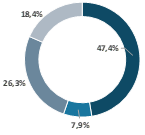

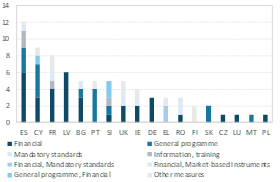
Source: MURE
This inefficiency results in higher heating bills and, in extreme cases, in a restriction in the use of these services, which negatively affects health. The precarious economic conditions inherent to vulnerable households make it difficult for them to undertake energy refurbishment work on their homes, even limiting access to bank loans, due to the conditions required. This limitation extends to financing applications for access to housing efficiency aid programs. This problem is exacerbated in rental housing due to the preferential orientation of subsidy programs towards home ownership. These circumstances explain some of the barriers that hinder the improvement of efficiency and thermal comfort in vulnerable households, thereby slowing the progress of the objectives established by Art. 8 of the EED. One solution could be affordable express refurbishment, which has a positive impact on the energy efficiency and comfort of dwellings, as well as a reduction in energy costs, as demonstrated by the results of studies carried out in Spain by the Gas Natural Fenosa Foundation and the Polytechnic University of Madrid (2017)16, and the Naturgy Foundation and the University of Comillas17. The second study showed a 12% reduction in hidden EP18 and a decrease of more than €100 in the EP gap19.
Overview and current trends in EP in Europe: Some key figures
The incidence and severity of EP varies across EU countries. Consensual indicators will be used for analysis in this regard due to the availability of up-to-date information. Despite their subjective nature, they are a good proxy for EP, with the added advantage of identifying the "feeling" of material deprivation perceived by households. According to some existing research on EP20, it is concluded that there is a higher prevalence in Southern and Eastern European countries. According to these studies, differences in the degree of incidence are due to factors such as housing stock characteristics (efficiency, typology, tenure), availability of heating, energy prices, socio-economic structure, and composition of energy supply. In the South and East, in general, there is a lower energy efficiency in housing, as well as a greater lack of adequate heating equipment. This could explain the paradoxical perception of inadequate winter temperatures in southern countries despite their favourable climate. In Eastern Europe, the transition from a planned to a market economy without adequate social protection mechanisms has also influenced EP in these countries. In contrast, in the North and West, the stronger economy, higher income levels, together with better housing construction characteristics and social coverage, have contributed to a lower severity of EP. In this context, it can be seen that in 2000-2018 several countries have experienced improvements in the consensual indicators, which can be explained by the adoption of measures that have helped to mitigate the impact of EP. Regarding the temperature perception indicator, improvements have been notable in countries such as Bulgaria, Poland, Portugal and Romania. Energy efficiency policies have played a role in this, as highlighted in a report published in 2020 in the EU Energy Poverty Observatory21. Regarding arrears on utility bills, the most significant improvements occurred in Croatia and Italy. Conversely, countries such as Greece, Ireland, Spain, Lithuania, and Denmark worsened in both indicators, with Greece having the highest rate of deterioration in both cases.
Since 2020, a general worsening is observed in most European countries under the effect of the recent crises (COVID-19 and energy prices). Its effect persists in 2023 in most European countries, with values above the pre-COVID-19 level in 70.4% of countries for the inability to keep housing at an adequate temperature and in 33.3% for late payment of bills. Regarding the magnitude of these indicators in 2023, 10.6% of European households state that they are unable to keep their homes at an adequate temperature. Eight countries have values above this average, with Portugal, Spain, Bulgaria, Lithuania, and Greece standing out for their highest values, and France and Romania at a greater distance. Of European households, 6.9% are delayed in paying their energy bills. This threshold is exceeded in 12 countries, with Greece, Bulgaria, Romania, Croatia, Spain, and Cyprus in the lead, and Hungary, Slovakia, and Latvia further behind. It can be confirmed that there is a certain prevalence in Southern and Eastern European countries, which seem to have been more affected by the COVID-2019 and energy crises. This underscores the structural nature of EP and its sensitivity to economic fluctuations.
Figure 4: (a) Consensual self-reported indicators (2023); (b) Trends over time in terms of percentage of EU countries with yearly improvement.
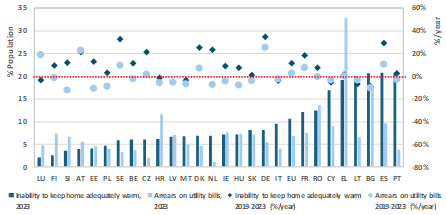

Source: EUROSTAT. EU-SILC survey
The segmentation of the indicators according to housing tenure regime allows observation of the higher incidence in rented dwellings for all EU countries, as shown by the ENPOR project, focused on the EP of households in rented dwellings, where there are greater difficulties in undertaking energy efficiency improvements. According to 2021 data available through this project, both indicators register values 5% higher on average in the case of rented households. These differences are higher in countries such as Lithuania, Spain, Romania, and Portugal, reaching maximum values in Lithuania of 15.7% and 20.9%, respectively, for the indicators of inadequate temperature and arrears on utility bills. In line with this, the Guidance Document on Vulnerable Consumers (2013) of the EC VCWG identifies tenants among the risk groups likely to experience vulnerability, a conclusion also evidenced by the XIV Report on the State of Poverty in Spain, prepared by the European Network for the Fight against Poverty and Social Exclusion in Spain (EAPN-ES).
Main conclusions and recommendations
EP is a growing problem that has become a central focus in EC strategies and legislative frameworks. This is reflected in the recent revisions of the EED and EPBD Directives, among others. Despite numerous initiatives aimed at promoting a just energy transition, which prioritise the need to address EP, the fact remains that energy affordability remains a serious problem to be tackled and eradicated, requiring better targeting of measures.
The diagnosis of EP is a key element in addressing this problem, for which the identification of vulnerable groups is essential, as well as the development of appropriate metrics and indicators. In this regard, the use of standardised definitions and indicators as outlined by Recommendation (EU) 2020/1563 is desirable as it allows for a comparison at a European level, while taking into account national specificities leads to a more accurate diagnosis of EP and, thus, to the design and implementation of more targeted policies. Consequently, several countries (Ireland, Italy, the Netherlands, Malta, and Cyprus), in their updated NECPs, have mentioned the existence of studies and projects aimed at developing EP methodologies and indicators. On the other hand, it is important to remember the complexity and multidimensional nature of EP, which makes the combined use of indicators advisable.
Monitoring systems require information for which statistical development is needed, with a focus on identifying energy-poor households, as well as conducting ad hoc monitoring studies. For the former, the collaboration of the competent authorities for statistics with social entities is key. Regarding the latter, a longitudinal monitoring study of a panel of vulnerable households in Spain is currently in progress. This is a study promoted by the IDAE and framed within the ENPE Strategy, within axis I "Improving knowledge on energy poverty", through which a better characterisation of the problem is expected, leading to an evaluation of the measures in force in the field of EP.
A correct diagnosis of EP will facilitate the right design and effective targeting of such measures so that they reach those who need them most, based on a correct characterisation of energy-poor households, affected not only by greater economic insecurity and instability, but also by a certain energy and digital illiteracy, in addition to a greater tendency to live in rented housing. These characteristics point to some of the barriers limiting access to EP mitigation measures, irrespective of their nature (welfare or structural). Thus, in order to facilitate access to support, greater simplification and streamlining of the application processes is required, as well as an improvement in the flow of information between all the agents involved. There is also a need for information and training on energy and administrative issues, as well as advice and support in the processing of applications, all of which are success factors in changing behaviours and access to aid that mitigate EP. In addition, consideration should be given to the obstacle associated with the tenure regime, limiting access to subsidies for households in rented housing. To this must be added the cost of the highest impact actions (energy refurbishment) and the difficulty of financing. The design of subsidies should take this circumstance into account, as well as promote solutions that address the dilemma - split incentives- between landlords and tenants regarding the recovery of costs associated with investments in energy refurbishment.
In the design and implementation of the measures, participatory processes should be promoted, in which all the entities involved collaborate, highlighting the role of third-sector entities due to their proximity and knowledge of the reality of EP.
Benefit measures that act through revenues provide immediate relief, without delving into the causes of the problem, so they should be combined with structural measures of greater impact, with an emphasis on energy efficiency as highlighted in Recommendation (EU) 2023/2407. In line with this, it is worth mentioning express refurbishment solutions for their cost-effectiveness in terms of EP reduction.
The Energy Saving Obligations Schemes represent an opportunity for the improvement of energy efficiency in the EP area and for the mitigation of this problem, thus facilitating the fulfilment of the objective established in Art. 8.3 EED, which is closely linked to the need to identify and quantify energy-poor households. Further extension of the use of this tool to vulnerable households is needed, building on good practices in more experienced countries such as France.
Notes
- 1: See Articles 5, 8, 9, 21, 22 and 24 of the EED.
- 2: See Articles 3 and 18 of the EPDB.
- 3: The identification of countries with good practices is based on several sources: Project LIFE20 GIC/HU/001660 – LIFE BIO-BALANCE, Report mentioned in note 21 and Energy Poverty and Vulnerable Consumers Coordination Group (EPVC).
- 4: https://energy.ec.europa.eu/topics/energy-strategy/national-energy-and-climate-plans-necps_en#draft-updates-of-the-necps
- 5: For this analysis, the PNIEC submitted by the UK in 2020 has been considered, given the interest of this country in the subject matter of this document.
- 6: The availability of official definitions has been considered, including cases where advanced proposals are available.
- 7: A scale of 0 to 6 is considered according to the score on the following criteria: definition of vulnerable consumer; definition of EP; availability of EP measures; metrics; good practices; EP Observatory.
- 8: “Energy Poverty National Indicators. Uncovering New Possibilities for Expanded Knowledge”. Energy Poverty Advisory Hub. October 2023.
- 9: The conceptual framework used in the Naturgy Foundation report “Pobreza energética en Europa. Un análisis comparativo”, 2020. Costa-Campi, M.T, Jové-Llopis, E. Trujillo-Baute. E, which considers the main mechanisms through which actions against energy poverty intervene, according to their impact on household income, expenditure and behaviour.
- 10: See Recitals No 18, 19, 20 and 28 of the Recommendation (EU) 2023/2407.
- 11: See Recital No 15 of the EED.
- 12: It includes disconnection protection instruments.
- 13: To apply for it, you must have contracted the Voluntary Price for Small Consumers (PVPC) in the main residence and meet certain income criteria.
- 14: Municipalities with up to 5,000 inhabitants and non-urban municipalities with up to 20,000 inhabitants in which their single population entities have up to 5,000 inhabitants.
- 15: Although since the UK formally left the EU at the end of 2020, it is not obliged to comply with the objectives of the ELD, it is worth noting the implementation of the Obligation Scheme (ECO) in 2013, being the first country to impose such obligations on energy traders in 1994.
- 16: de Luxán, M., Sánchez-Guevara, C., Román, E., Barbero, M., Gómez, G., (2017). “Rehabilitación exprés para hogares vulnerables: Soluciones de bajo coste”.
- 17: Barrella R., Romero JC., (2023). „Evaluación del impacto de la rehabilitación exprés en la pobreza energética: análisis de casos reales”.
- 18: A situation in which the energy expenditure of a low-income household is lower than that required to achieve a minimum level of comfort.
- 19: Difference between half of the required energy expenditure of a household and the actual energy expenditure to have a comfortable situation.
- 20: Bouzarovski, S., Tirado Herrero, S., 2017. “The energy divide: integrating energy transitions, regional inequalities and poverty trends in the European Union”; Bouzarovski, S., 2018. “Energy Poverty (Dis)Assembling Europe’s Infrastructural Divide”.
- 21: Bouzarovski, S., Thomson H, 2020. “Towards an inclusive energy transition in the European Union: Confronting energy poverty amidst a global crisis”.
